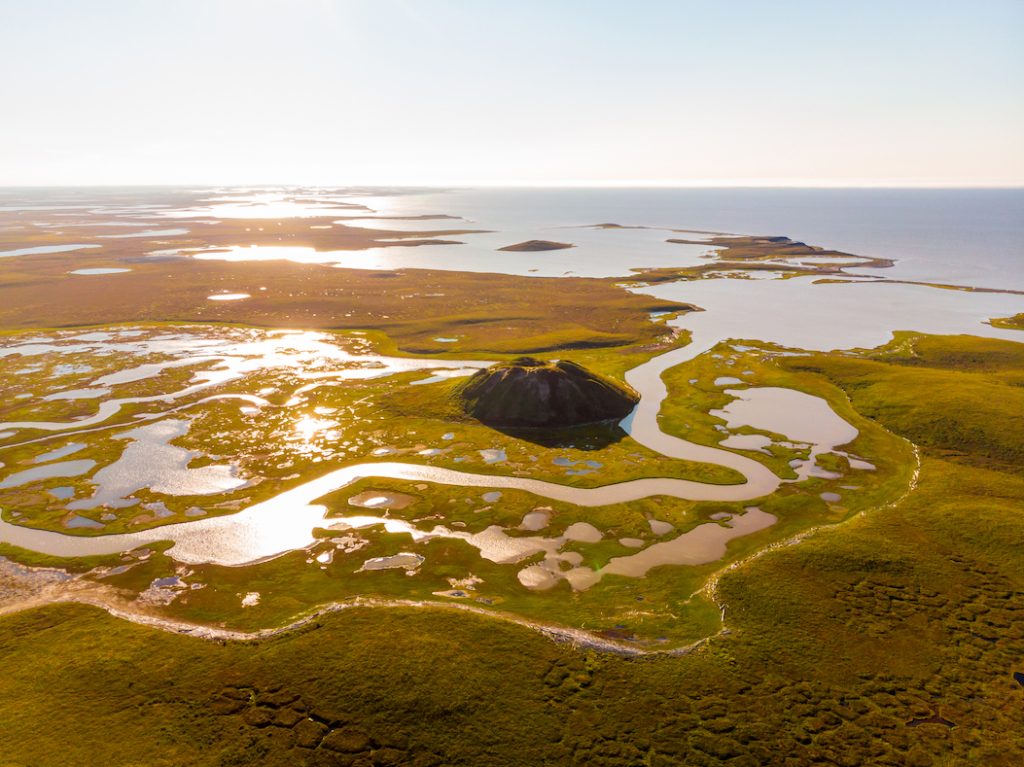Where Ancient Earth Meets Wild Beauty
The Northwest Territories is one of Canada’s most geologically rich and geographically diverse regions. Here, landscapes shaped over billions of years set the stage for unforgettable Northern experiences. You will find carved canyons, towering pingos, vast lakes, and some of the oldest rocks found anywhere on the planet.
Stretching from the boreal forest to the Arctic Ocean, the NWT is made up of five distinct regions. Each one offers its own character and natural wonders:

South Slave
The region includes thundering waterfalls, wild river routes, and access to Wood Buffalo National Park.
North Slave
Home to Yellowknife and the ancient bedrock of the Canadian Shield. The region offers easy access to wild lakes, island-dotted shorelines, and boreal forest.
Dehcho
Defined by the dramatic landscapes of Nahanni National Park Reserve. Limestone canyons, hot springs, and the rushing waters of the South Nahanni River create one of the Country’s most iconic wilderness areas.
Sahtu
Surrounding Great Bear Lake, this region is known for the Mackenzie Mountains, sweeping plateaus, pristine waters, and rich Indigenous culture.
Western Arctic
A world of tundra and Arctic coastline. Here, you will find one of the highest concentrations of pingos on Earth, close to the coastal community of Tuktoyaktuk.

Natural Wonders that Await you…
The oldest known rock on Earth: The Acasta Gneiss
Located northwest of Yellowknife, this formation is more than 4 billion years old. It offers a rare link to Earth’s earliest history.
One of the greatest wilderness waterfalls on Earth: Náįlįcho (Virginia Falls)
Found in Nahanni National Park Reserve, Náįlįcho is an awe-inspiring waterfall twice the height of Niagara Falls. It is surrounded by towering cliffs and dramatic river canyons.
Great Slave Lake: the deepest lake in North America
Dropping to depths of more than 614 meters (2,000 ft), Great Slave Lake shapes the region’s climate, culture, and travel routes. Its sprawling bays, colourful shorelines, and winter ice roads define life in the North.
Great Bear Lake: The largest freshwater body entirely within Canada
Crystal clear and largely untouched, Great Bear Lake is world-renowned for trophy fishing, vibrant turquoise shallows, and its significance to the Sahtu Dene. Its remote beauty feels truly timeless.
Canada’s longest river, the Mackenzie River
Flowing 1,738 km (1,080 mi) from Great Slave Lake to the Arctic Ocean, the Mackenzie is a historic lifeline for travel, culture, and wildlife. Its corridor connects boreal forests, wetlands, mountains, and tundra.
Pingos: ice-cored hills of the Western Arctic
Near Tuktoyaktuk, more than 1,300 pingos rise from the tundra. These ice-cored hills are a unique Arctic phenomenon, found in greater numbers here than anywhere else on Earth.
Plan Your Northern Adventure
The land is ancient, the landscapes are epic, and every turn reveals something extraordinary. Inspired to see for yourself? Our Travel Information page has everything you need to start planning your unique Northern adventure.
